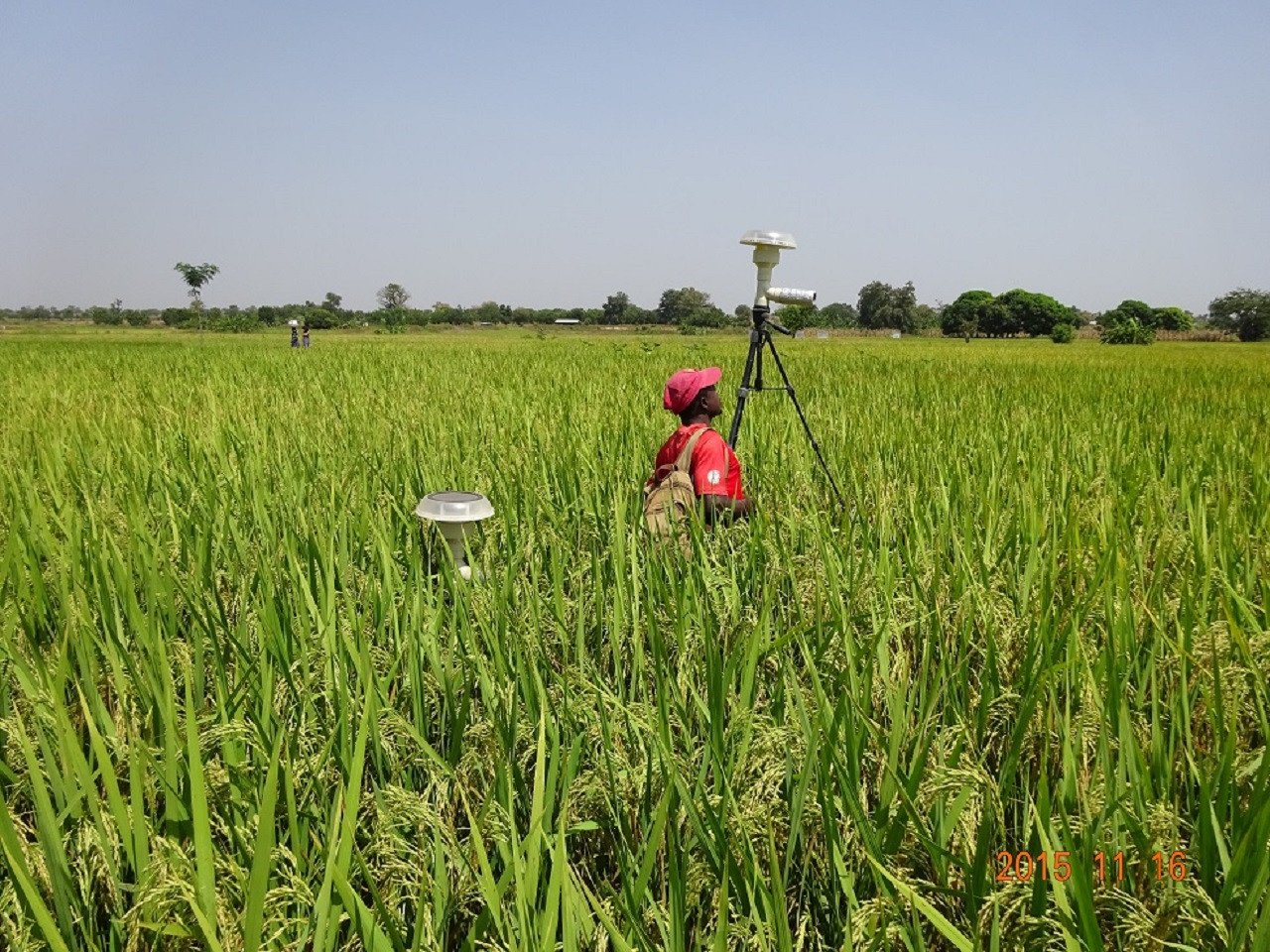Pick Up
616. Elucidating the Actual State of High-Temperature Sterility in Rice Through International Monitoring Network

As global warming progresses, there is concern about the decline in productivity and quality of paddy rice due to heat-induced sterility, which occurs when the spikelets are exposed to high temperatures during flowering. However, there has been no analysis of what kind of growing environment tends to cause such spikelet sterility. For this reason, a research group including JIRCAS has established MINCERnet, a global research alliance, for monitoring the rice canopy thermal environment in paddy fields and for collecting other crop data covering 11 countries around the world. The network has conducted observations using a common instrument MINCER (Meteorological Instrument for Near Canopy Environment of Rice) to accumulate data on heat-induced sterility, ambient air temperature, and spikelet temperature of paddy rice under various climatic conditions with different temperatures and humidity. Analysis of this data revealed for the first time in the world that heat-induced sterility can be uniformly evaluated by using panicle temperature at the time of flowering, rather than ambient air temperature as an indicator (Yoshimoto et al., 2022). As a result, it was estimated that the risk of heat-induced sterility is high in regions with hot and humid climates because the panicle temperature tends to be high due to the low evaporative cooling effect associated with transpiration. This evaluation method will improve the accuracy of predicting high-temperature sterility worldwide and to take appropriate measures against heat-induced sterility.
Project Leader Tsujimoto of JIRCAS contributed to this international monitoring network by collecting data in collaboration with the Savanna Agricultural Research Institute in northern Ghana, where high temperatures of 35°C or higher occur frequently during the paddy rice growing season. Furthermore, through more detailed analysis of data collected at observation sites in Ghana, the effects of different water management practices in rice paddies on heat-induced spikelet sterility and grain yield through changes in rice canopy microclimate were clarified, and the results were published in a paper in Field Crops Research (Tsujimoto et al., 2021) and also featured in the JIRCAS Research Highlights 2020.
Contributors: SAITO Kazuki (Africa Rice Center and Social Sciences Division), TSUJIMOTO Yasuhiro (Crop, Livestock and Environment Division)
References
Yasuhiro Tsujimoto, Abraham Fuseini, Baba I.Y. Inusah, Wilson Dogbe, Mayumi Yoshimoto, Minehiko Fukuoka (2021) Different effects of water-saving management on canopy microclimate, spikelet sterility, and rice yield in the dry and wet seasons of the sub-humid tropics in northern Ghana. Field Crops Research, 260, 107978. https://doi.org/10.1016/j.fcr.2020.107978.
Mayumi Yoshimoto, Minehiko Fukuoka, Yasuhiro Tsujimoto, Tsutomu Matsui, Kazuhiro Kobayasi, Kazuki Saito, Pepijn A.J. van Oort, Baba I.Y. Inusah, Chenniappan Vijayalakshmi, Dhashnamurthi Vijayalakshmi, W.M.W. Weerakoon, L.C. Silva, Tin Tin Myint, Zar Chi Phyo, Xiaohai Tian, Huu-Sheng Lur, Chwen-Ming Yang, Lee Tarpley, Norvie L. Manigbas, Toshihiro Hasegawa (2022) Monitoring canopy micrometeorology in diverse climates to improve the prediction of heat-induced spikelet sterility in rice under climate change. Agricultural and Forest Meteorology, 316, 108860. http://doi.org/10.1016/j.agrformet.2022.108860
Press release
https://www.naro.go.jp/publicity_report/press/laboratory/niaes/154560.h…
JIRCAS Research Highlights 2020: Effect of non-flooded water management on inside-canopy temperature dynamics, spikelet sterility, and grain yield of lowland rice in the tropics
https://www.jircas.go.jp/en/publication/research_results/2020_b12
Contributors: SAITO Kazuki (Social Sciences Division・Africa Rice Center), TSUJIMOTO Yasuhiro (Crop, Livestock and Environment Division)
